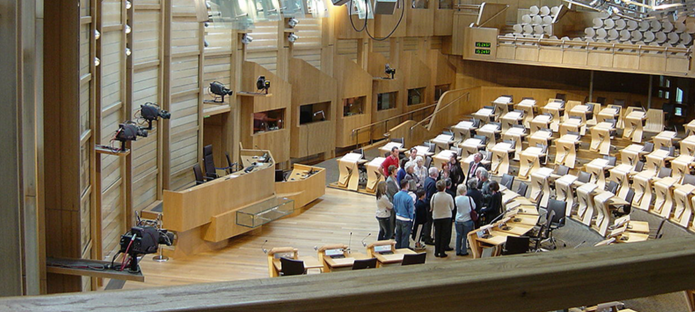This statement has been reviewed and updated by the Community and Ambulance Resuscitation (CARe) Subcommittee within Resuscitation Council UK.
Introduction
When a person has a sudden cardiac arrest, quick action by someone nearby offers their only chance of survival. An immediate 999 call for an ambulance and starting cardiopulmonary resuscitation (CPR) promptly are essential. Many people who survive will also require a shock from a defibrillator to correct an abnormal heart rhythm.
The earlier that shock is given, the better the person’s chance of survival. Studies have shown that a shock given within three minutes of cardiac arrest provides the best chance of survival and that even one minute of further delay reduces that chance substantially. In most situations, ambulance services are unlikely to reach the scene of a cardiac arrest and deliver a shock within three minutes of the cardiac arrest occurring.
For that reason, increasing numbers of defibrillators are available for use by members of the public. These devices are referred to as ‘public access defibrillators’. Using a public access defibrillator is simple - just switch the device on and follow the spoken/visual instructions. They can be used effectively and safely by people without prior training.
Further studies have confirmed that immediate delivery of CPR combined with the early use of an automated external defibrillator by members of the public gives a person in cardiac arrest the best chance of survival.
Cabinets for public access defibrillators
Public access defibrillators are usually kept in cabinets in prominent public locations with signage to help people locate them. Some cabinets are unlocked, some are locked and require a code. The ambulance service will give this code to the person who makes the initial 999 call once they have confirmed that they are dealing with a cardiac arrest nearby.
Unlocked Vs locked cabinets
The priority is to apply an automated defibrillator to the person in cardiac arrest with the absolute minimum delay. Unlocked cabinets allow for this. There will inevitably be a delay when a cabinet has to be unlocked. A person will need to place a 999 call while commencing CPR; the call handler will inform the rescuers of their nearest public access defibrillator and give them the access code. If the individual sent for the defibrillator forgets the code, a second 999 call is needed before they can access the device. This wastes valuable time, and the ambulance service may be busy responding to other calls. Patient safety incidents reported to NHS England indicate that locked cabinets have been associated with delays in accessing the devices and, in some cases, have prevented the device from being accessed due to the code being unavailable or incorrect when supplied.
There is a perceived concern that a defibrillator in an unlocked cabinet may be stolen or tampered with, making it unavailable or of no use to a person in cardiac arrest. Despite the widespread use of unlocked cabinets, experience to date has shown that instances of theft and vandalism are uncommon.
Locking a cabinet is no guarantee that a defibrillator will not be stolen or vandalised. A locked cabinet implies that the defibrillator is sufficiently valuable to be worth stealing. Reports from ambulance services and data provided by The Circuit indicate that there is no evidence that public access defibrillators in locked cabinets are less likely to be stolen or vandalised.
Crime prevention measures may reduce the risk of theft or tampering with a public access defibrillator. These include placing the cabinet in a public place where it is supervised or covered by closed-circuit television surveillance. The use of tracking devices in defibrillators will immediately indicate their removal from the cabinet, and their whereabouts will subsequently be traceable.
Other measures clearly advertised alongside the cabinet will also discourage criminal interference. Such a notice might include the information that the defibrillator is vital lifesaving equipment and that removing it may cost someone's life - and that might be a friend or relative. It can be stated very clearly that the devices are all individually recognisable and traceable and have no other use or inherent value.
Some reports of theft and vandalism likely relate to devices that have been deployed to patients. These devices are usually successfully returned to their Guardians after some delay. This waiting time can be reduced by clearly marking the device with the Guardian’s contact details and indicating where it is normally located. Registration on The Circuit ensures that ambulance services can match device details (brand, model, serial number) to the Guardian who registered it.
Another factor to consider is cost. A defibrillator and lockable cabinet or a defibrillator with additional technology (such as remote tracking) costs substantially more than a simple cabinet and straightforward defibrillator.
The Circuit
The Circuit is the national defibrillator network that maps the location of public access defibrillators and provides this data to ambulance service control centres so that their whereabouts are known in an emergency. It is essential that everyone who owns a defibrillator intended for public use registers their device on The Circuit, as this enables ambulance call handlers to direct people to the nearest defibrillator. There are other advantages, such as The Circuit sending out regular reminders about the upkeep and maintenance of the defibrillator.
Further information is available at www.thecircuit.uk.
In most cases, public access defibrillators will be available for use at all times, and registration with The Circuit will be straightforward. In other circumstances, the defibrillator may not be constantly accessible, for example, in a closed shop at night. The Circuit is designed to allow defibrillators that are not available 24/7 to be registered.
Recommendation
Public access defibrillators should be placed in unlocked cabinets that allow immediate access in an emergency. If a defibrillator guardian wishes to convert their locked cabinet into an unlocked cabinet, they should follow the manufacturer's guidance for disabling or removing the lock.
Registering your defibrillator on The Circuit will allow ambulance services to direct people to their nearest accessible device.
Download the consensus statement on AED cabinets
Reviewed and updated August 2024
Reviewed and updated September 2021
Published Fri, 27/11/2015

